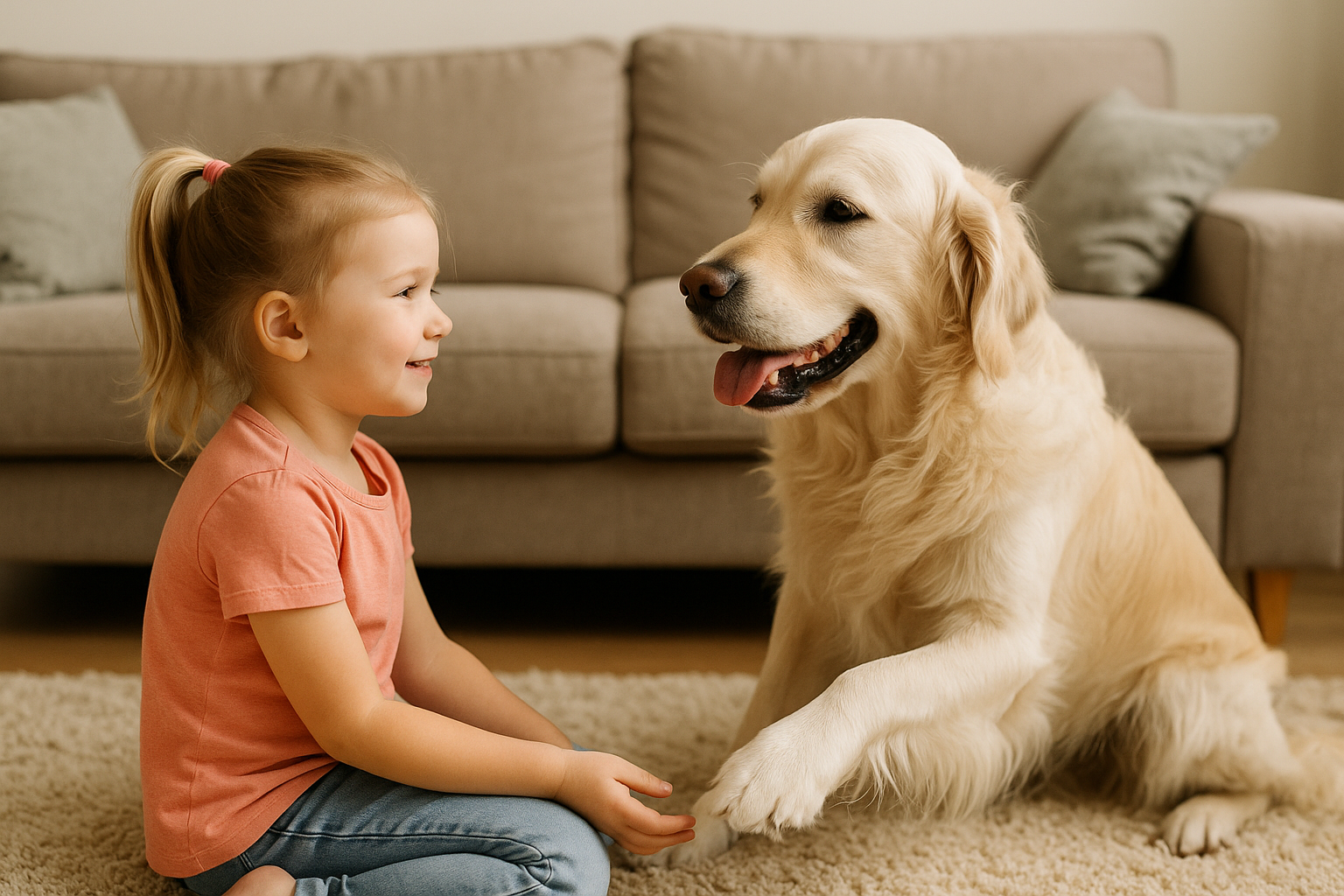Golden Retrievers are famous for their gentle nature and family-friendly temperament, which makes them one of the best breeds for homes with children. But even the most affectionate dog needs guidance and boundaries to build a safe, happy relationship with kids. Whether you already have both a Golden and children at home, or you’re planning to introduce one to the other, this article will help you ensure a peaceful and joyful bond between them.
Why Golden Retrievers Are Great with Kids
Golden Retrievers were bred to be calm, obedient, and eager to please—traits that translate beautifully into family life.
Natural Strengths:
- Gentle temperament: Goldens are known for being patient and rarely aggressive.
- Playful energy: They enjoy the same kind of active fun that kids do.
- Loyalty and bonding: They form deep attachments with their human “pack.”
- Trainability: Their intelligence makes them responsive to commands, including those related to gentle play.
But like any dog, they need socialization, training, and supervision to thrive in a family setting.
Preparing Your Golden for Life with Kids
If your Golden Retriever has never been around children, don’t expect them to just “figure it out.” Preparation helps prevent stress or confusion.
Key Steps:
- Gradually expose them to the sights and sounds of children: playdates, playgrounds (from a distance), toys, and noises.
- Teach commands like “sit,” “stay,” and “gentle” so they understand how to behave calmly around little ones.
- Desensitize them to sudden movements or loud voices, common around toddlers.
- Reward calm behavior whenever kids are nearby, reinforcing that children = good things.
The earlier you start this process, the better your Golden will adjust.
Teaching Children How to Treat the Dog
Kids also need to learn how to treat your dog with respect. Even the sweetest Golden can react negatively if provoked.
What Kids Should Know:
- No pulling ears, tails, or fur
- Don’t climb on or ride the dog
- Let the dog sleep or eat without interruption
- Use calm voices and soft hands
- Always ask before petting or hugging
Supervise interactions at all times, especially with toddlers or very young children.
Managing First Introductions
First impressions matter! The first few meetings between your Golden and your child (or visiting children) should be calm and positive.
Tips for Success:
- Keep your dog on a leash if you’re unsure of their reaction.
- Let the child approach the dog, not the other way around.
- Have treats ready to reward your Golden for calm behavior.
- Keep sessions short and gradually increase time together.
- Praise both the dog and the child for gentle interactions.
Don’t rush the process—building trust takes time.
Setting Boundaries for Both Dog and Child
Even with the best behavior, both your child and dog need limits to avoid misunderstandings or accidents.
For the Dog:
- Don’t allow rough play or jumping on kids.
- Teach them to go to their bed/crate when they need quiet time.
- Make sure they’re not allowed to steal toys or food from children.
For the Child:
- No teasing with toys or food.
- Don’t wake the dog while sleeping.
- Keep the dog’s belongings (food bowl, crate) off-limits.
Boundaries prevent accidents and create mutual respect.
Recognizing Warning Signs
Golden Retrievers rarely show aggression, but it’s crucial to recognize early signs of stress or discomfort.
Warning Behaviors:
- Yawning or licking lips excessively
- Turning their head away or trying to walk away
- Stiff body posture or tail tucked
- Growling or low warning barks
If you see these, end the interaction calmly and give the dog space. Never punish warning signs—respect them.
Fun Activities Kids and Goldens Can Do Together
Creating positive, shared experiences builds trust and friendship.
Safe and Fun Ideas:
- Playing fetch in the yard
- Walking the dog with adult supervision
- Teaching simple tricks like “shake” or “high five”
- Hiding treats for the dog to find
- Reading books to the dog (great for young readers!)
These activities strengthen the bond and create happy memories.
What to Do If There Are Problems
Even with preparation, challenges can happen. If your Golden growls, snaps, or acts overly fearful, don’t panic.
Action Steps:
- Separate the dog and child immediately
- Re-evaluate your training and environment
- Consider hiring a professional dog trainer or behaviorist
- Consult your vet to rule out pain or health issues
- Resume slow, structured interactions
With patience and the right approach, most issues can be resolved.
Final Thoughts: A Friendship That Lasts a Lifetime
Golden Retrievers and children can build some of the most heartwarming relationships—but only when both are set up for success. With preparation, boundaries, and lots of supervision, your Golden will likely become not just a family pet, but your child’s best friend, protector, and playmate.

